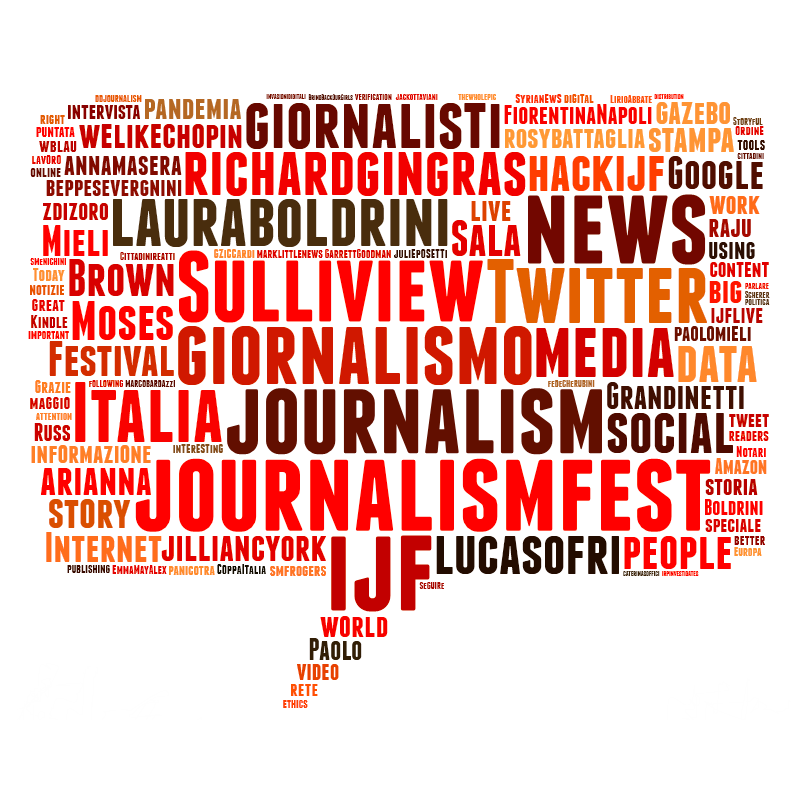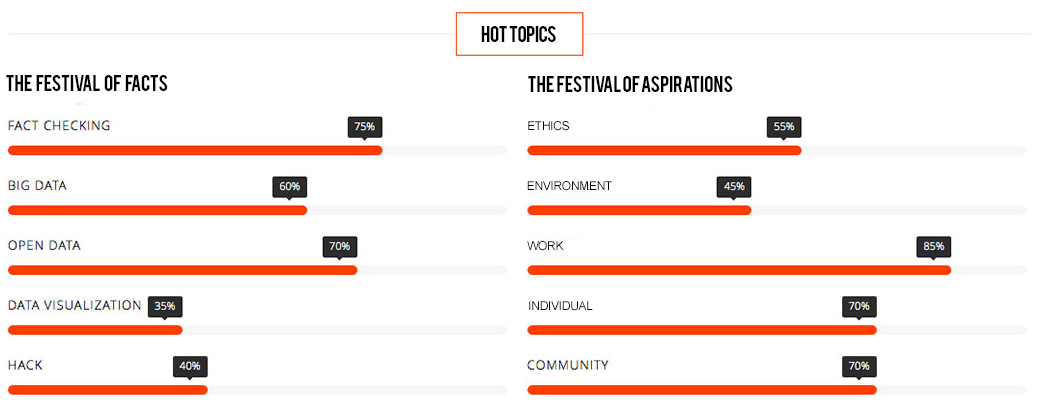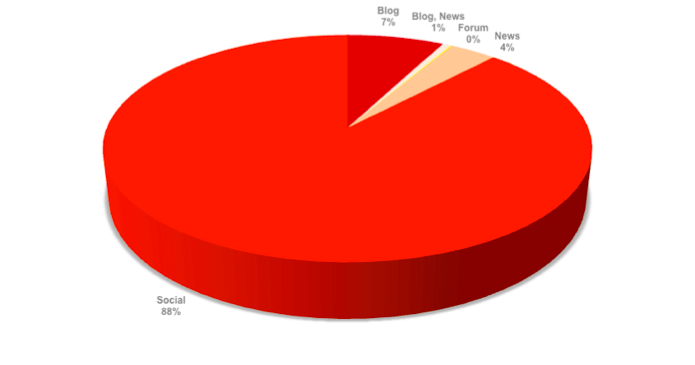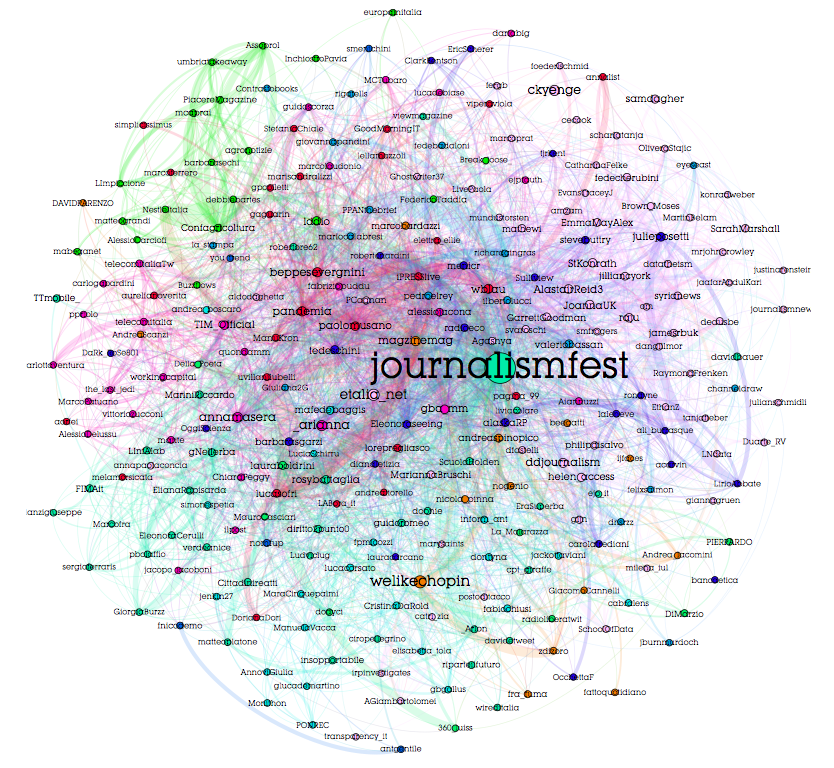Here is a summary of the key numbers of the 2014 International Journalism Festival.
Riding a wave of enthusiasm from a successful crowdfunding campaign, the festival enjoyed growth in both physical and digital participation.
With 544 speakers, over 2,000 accredited journalists and very substantial attendee flows, the festival has undoubtedly reached a level comparable to other major European or indeed worldwide media events.
In the day-by-day analysis of Twitter conversations, identification has been made of words and issues which indicate interesting paths. Tag clouds have been cleared of all proper names, such as titles of newspapers and so on, to highlight content and not the vehicles of transmission (human or digital).
 Each of these issues has its own appreciation as a quantitative presence.
Each of these issues has its own appreciation as a quantitative presence.
It is not surprising that in an event in which there were many discussions on job insecurity, remuneration and recognition of rights to authors of UGC contributions, jobs are the dominant theme.
It should also not be surprising that fact checking is the second of the hot topics: the deployment of means of production of information/testimony makes the checking of material found on the web fundamental.
Speed is important, credibility is crucial.
“Fast is good but right is better” Se lo dice Margaret Sullivan del @nytimes potete crederle, su. #ijf14
— occhidaorientale (@occhidaoriental) 3 Maggio 2014
Regarding personal credibility, how can we not refer to how the communities that we build represent us? How much do they contribute to the perception third parties have of us, reading what we write but also what our contacts write?
Tools of participation
Last year, we highlighted a significant leap forward for mobile devices, smartphones and tablets. This year there is also an increase, albeit more modest, from 65% in 2013 to 72% in 2014.
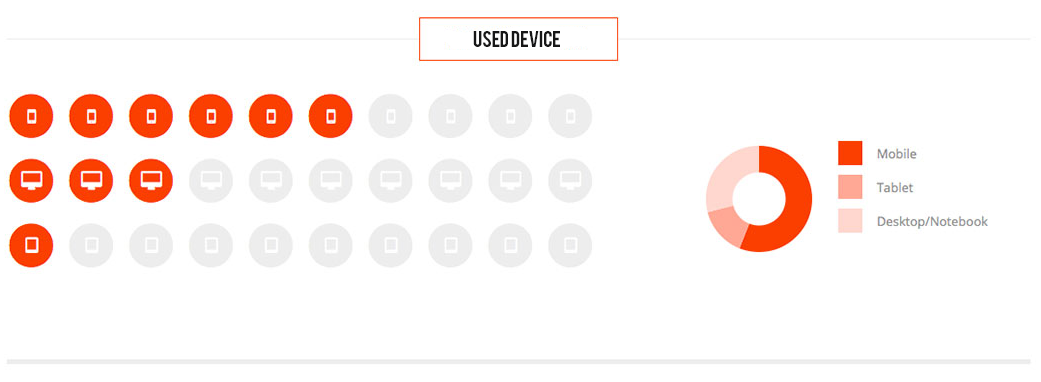
Tablets encounter a resistance to mobility use because their performance is effectively the same as for smartphones. The more convenient wins.
Communication channels
The festival is a twitter-centered event. In 2013 the number of tweets reached almost 44,000, the 2014 festival saw a significant threshold broken with 50,300.
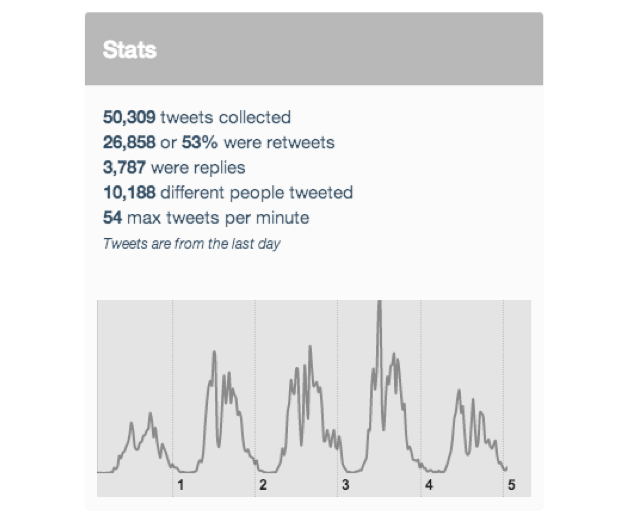
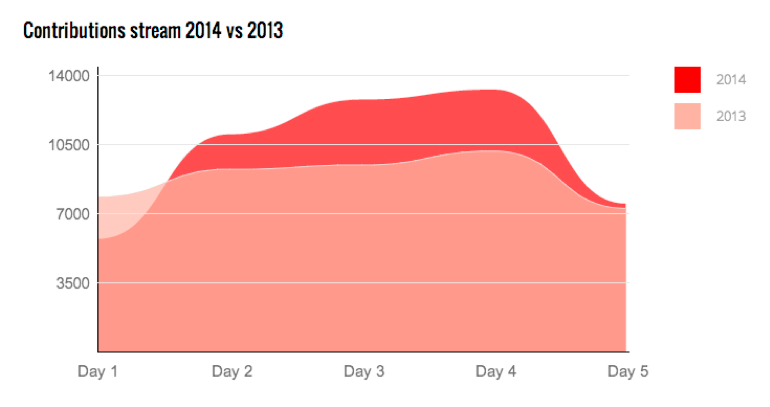
There are fewer RT (they decreased from over 60% in 2013 to just over 52% in 2014) and more original contributions. We explain this as a more active and more conversational sign.
The crowdfunding campaign has also enhanced the festival’s presence on Facebook. This presence surpasses the 2,000 contributions during the five days of the festival, and 764 of these contributions are shared photos or links.
Facebook strengthens its role as a channel of great importance not only for the preparation of the festival but also as a means of sharing during the event itself.
The connections map showcases, in the upper right corner, a significant contribution of non-Italian participants. Compared to last year it appears to be more characterized and with stronger relationships with the rest of the contributors.


